Review – Range Rover Evoque P300e (2023) – BPM stunner with 309 hp
Range Rover Evoque
The Evoque is the smallest Range Rover you can get. Or rather, the least great. You can’t call him small. It is available today as a plug-in hybrid, and that is immediately the version to have. In fact, it is the cheapest and the most powerful version. So a win-win situation. It boasts over 300 horsepower and comes from 63,000 euros. By comparison, for 6,000 euros more you have a bare-bones gasoline version with only 160 hp. More money for less power, in other words. Moreover, you cannot drive partially electric with that version.
Range
In fact, on paper, the Evoque can travel 66 kilometers without consuming a drop of gasoline. We manage to squeeze 58 kilometers out of the battery pack. A neat score and enough for most daily drives, then. As with any PHEV, it is important to charge as much as possible. A home charger or charging facility at work is therefore essential.
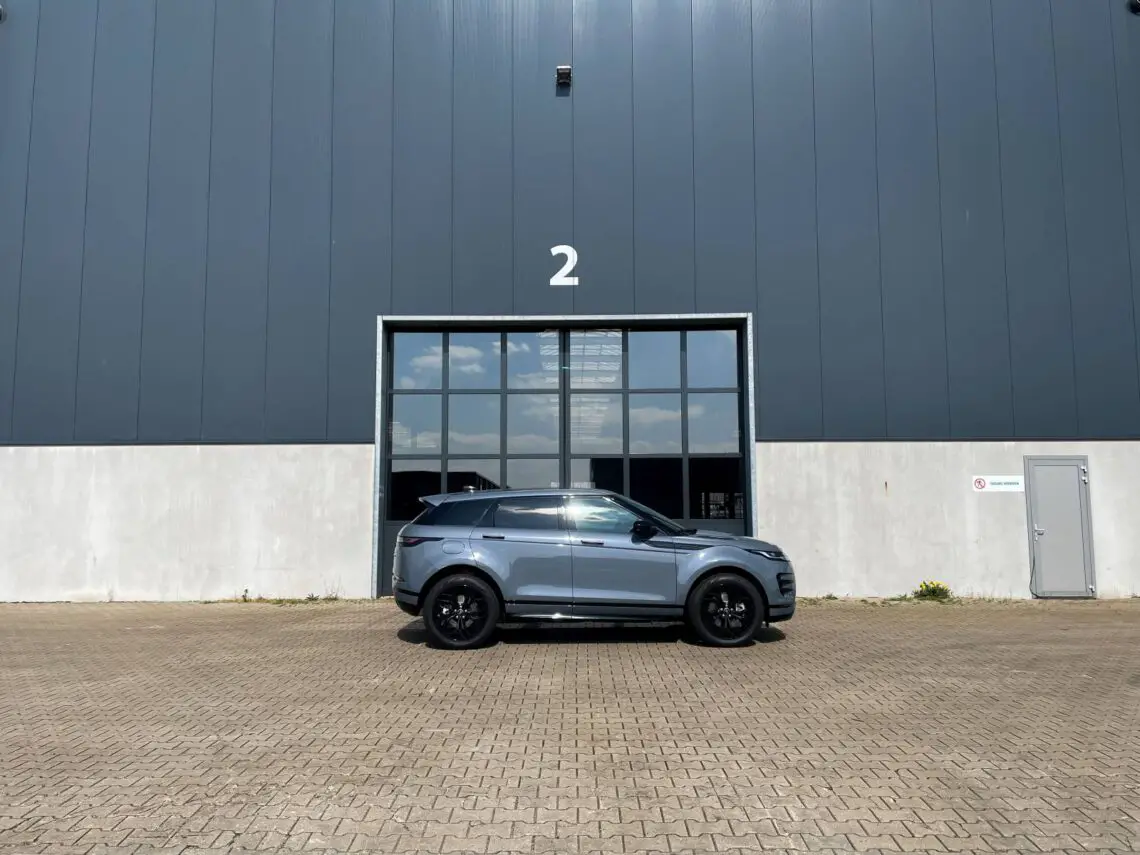
fast charging
Under the rear seat is a 15 kWh battery pack. At home or at work, it takes about 5 to 6 hours to fully charge it. Fast charging is also possible, which is quite unique for a PHEV. It can handle up to 32 kW of charging power, taking about 30 minutes to charge the battery pack from 0 to 80 percent.
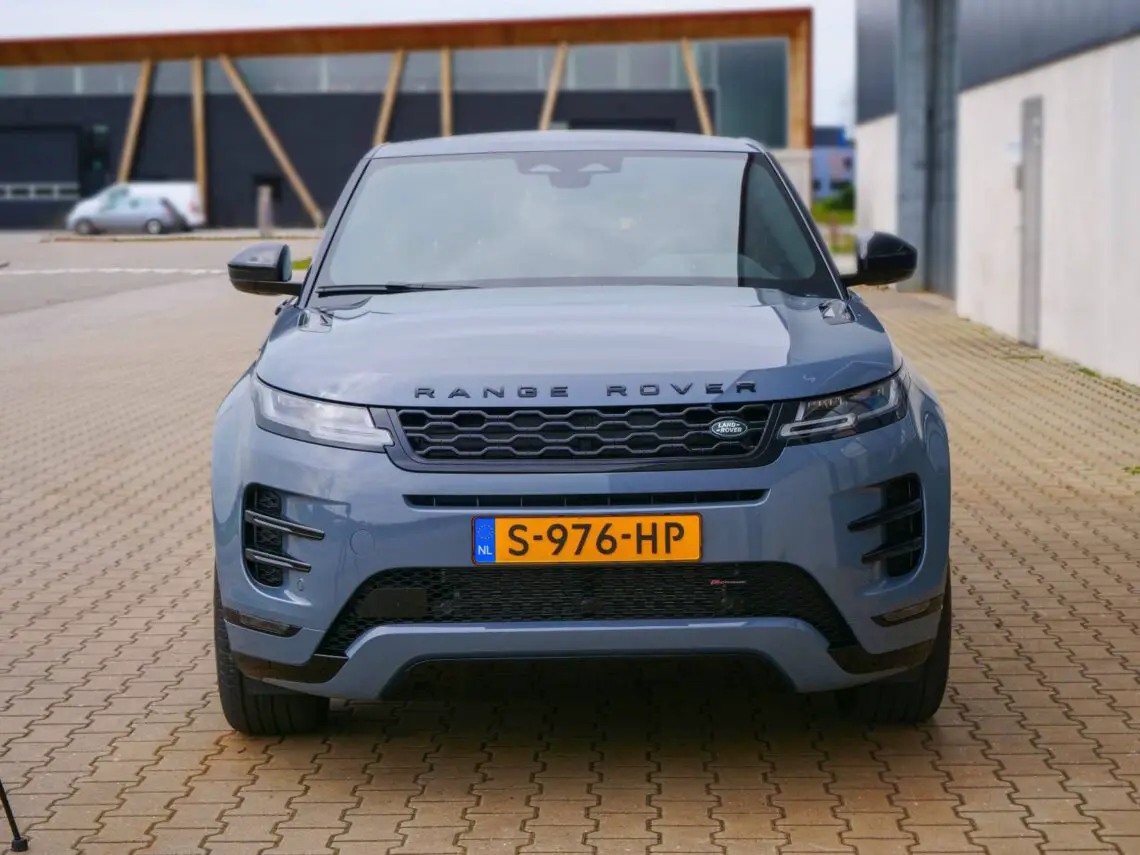
PHEV powertrain
Thanks to a 200-hp 1.5-liter three-cylinder and 109-hp electric motor, the P300e plug-in hybrid has a combined system output of 309 hp. Torque comes out to 540 Nm and a 0 to 100 km/h sprint goes in just 6.6 seconds. Not boring at all, then, such a plug-in hybrid.

Sufficient power
On electric power, the Evoque boasts “only” 109 horsepower. Thanks to the readily available torque from the electric motor, it still gets along well with traffic in EV mode. For a quick intermediate sprint, you need to press the accelerator pedal extra deeply, then the gasoline engine instantly shifts on. All this goes smoothly and without any noticeable jerking or banging. Despite its hefty weight – nearly 2,200 kilograms – the Range Rover Evoque is surprisingly comfortable. The undercarriage neatly catches potholes and bumps in the asphalt. Only at high thresholds do you notice that it is sprung a little harder, to accommodate the extra weight of the battery pack.
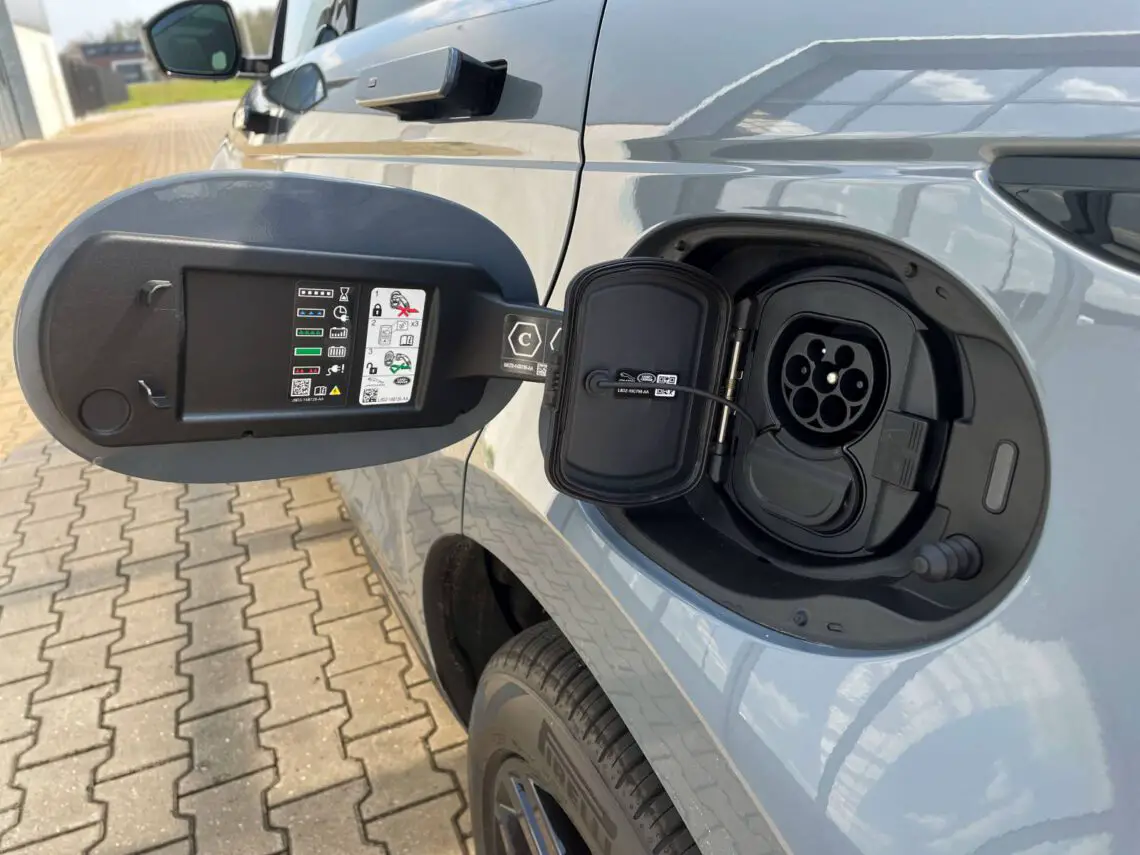
Velar lookalike
The second-generation Evoque has been on the market since 2018 and looks more like a Ranger Rover Velar dubbleganger than ever. Like its big brother, it also has handles that are smoothly concealed in the doors and window pillars that blend seamlessly into the body. Even the taillights look like they were plucked right off the decent Range Rover Velar. The lighting is also connected on either side by a black bar, which Land Rover uses to create the illusion of unity.
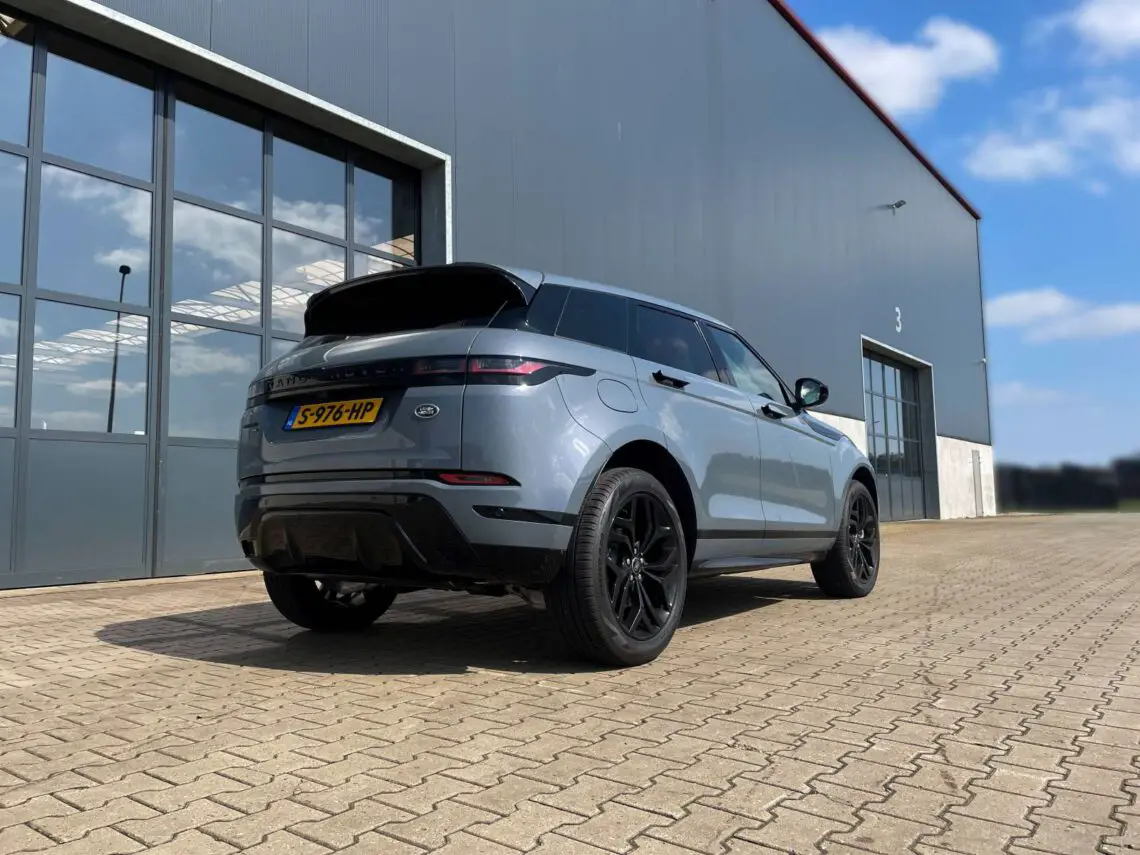
Digital rearview mirror
The hip coupe look is partly responsible for the Evoque’s success, but also for minimal visibility in the rearview mirror. A clever solution has been devised: there is a camera on the roof connected to the interior mirror. Pulling a switch turns the mirror into a video screen. So you always have perfect rear visibility, even if you have passengers or luggage behind you.
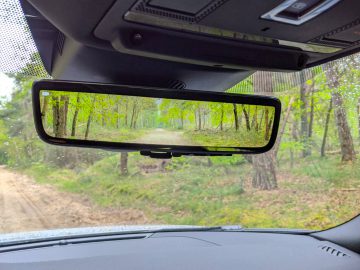
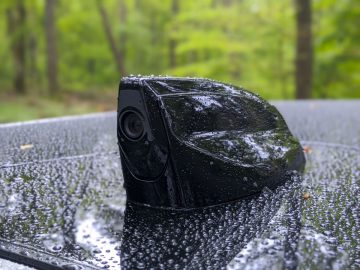
Range Rover Evoque 4×4
Not every Evoque owner will leave the asphalt and that is actually a shame. In fact, unlike many competitors, the Evoque has all-wheel drive and you can choose from several driving modes. The elegant 4×4 can even drive through 60-centimeter-deep water. With the Wade Sensing option, an ultrasonic sensor measures how deep the water is.

Luxury Horse
The interior of the P300e is as you would expect in a Range Rover: very stylish. It looks luxurious and elegant, but not old-fashioned. In that respect, the Evoque is also very similar to the Velar on the inside. Gone are (almost) all the buttons. In the center console are two screens on top of each other: the Touch Pro Duo system. The infotainment screen is responsive and, of course, supports Apple CarPlay and Android Auto. In the video below, we tell you more about our experience with the plug-in Evoque.

